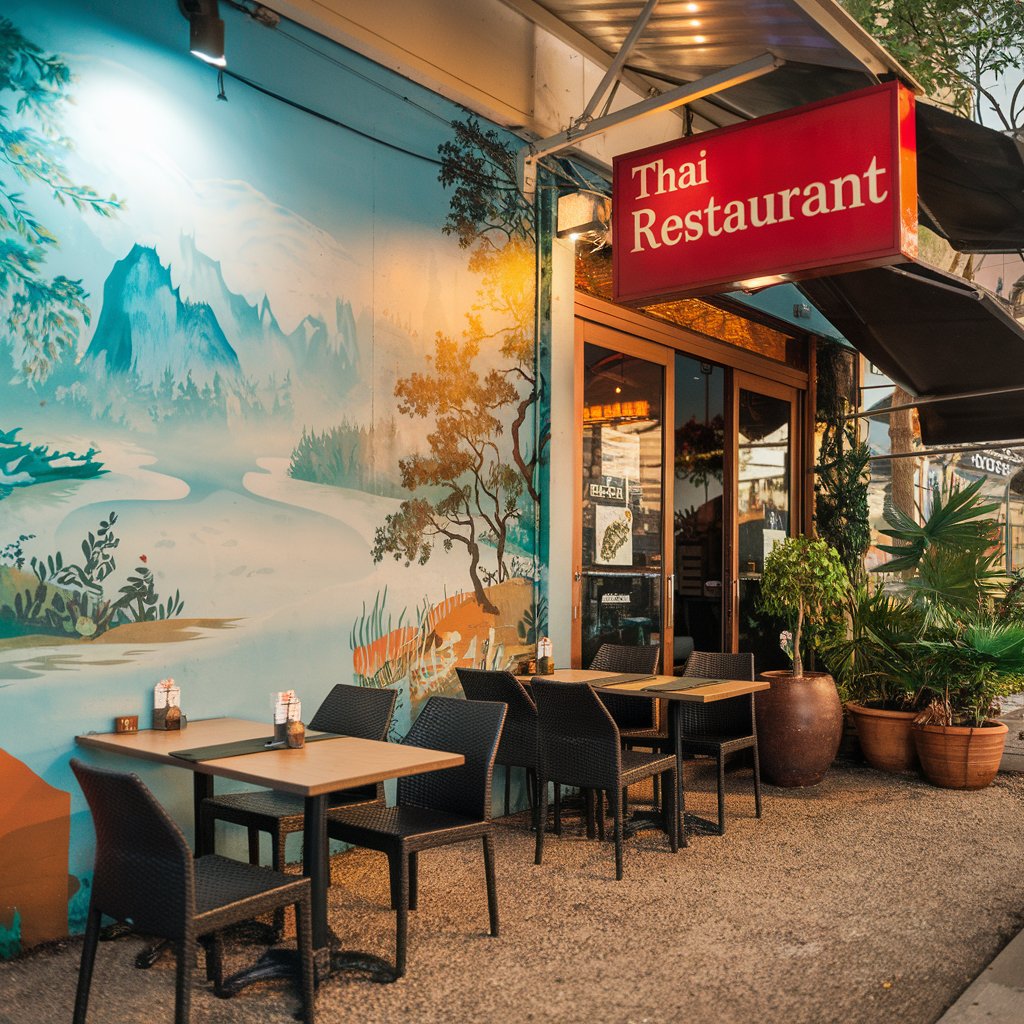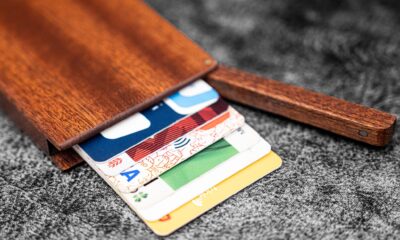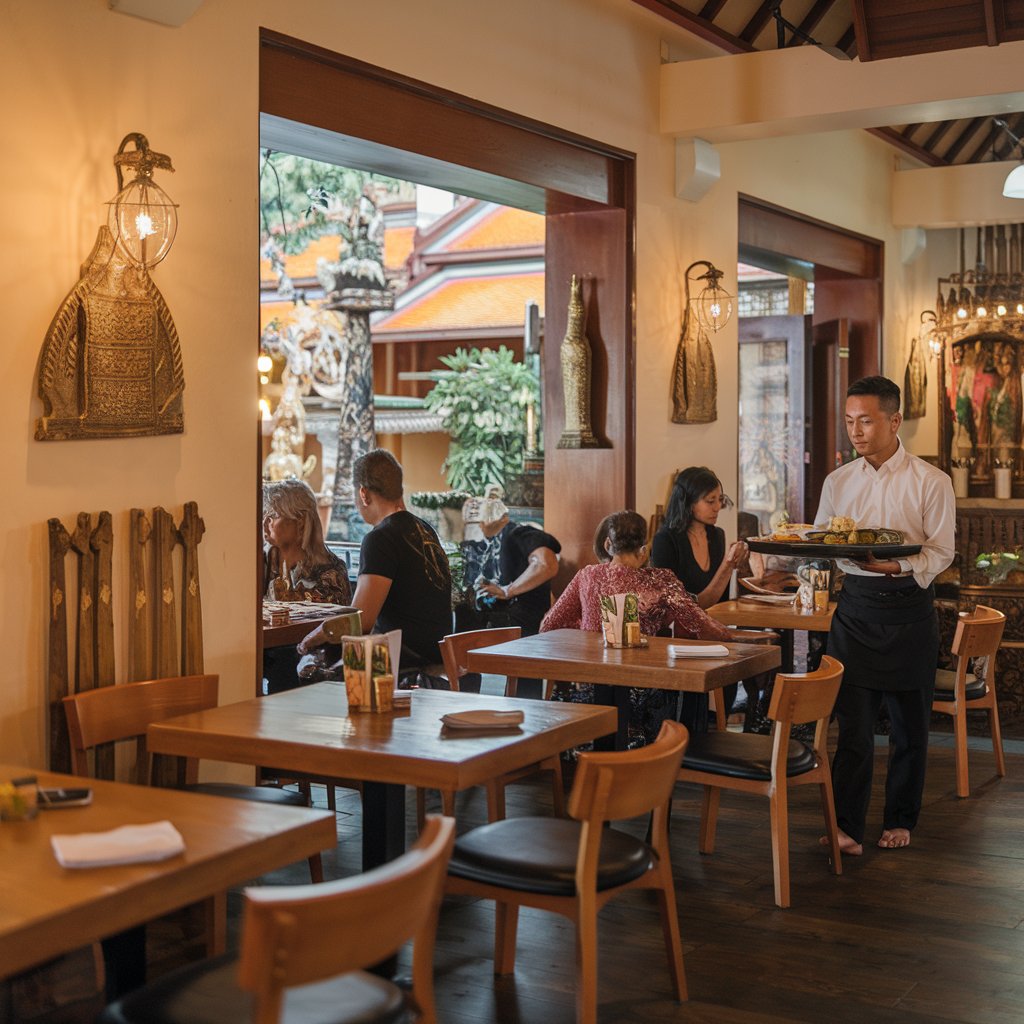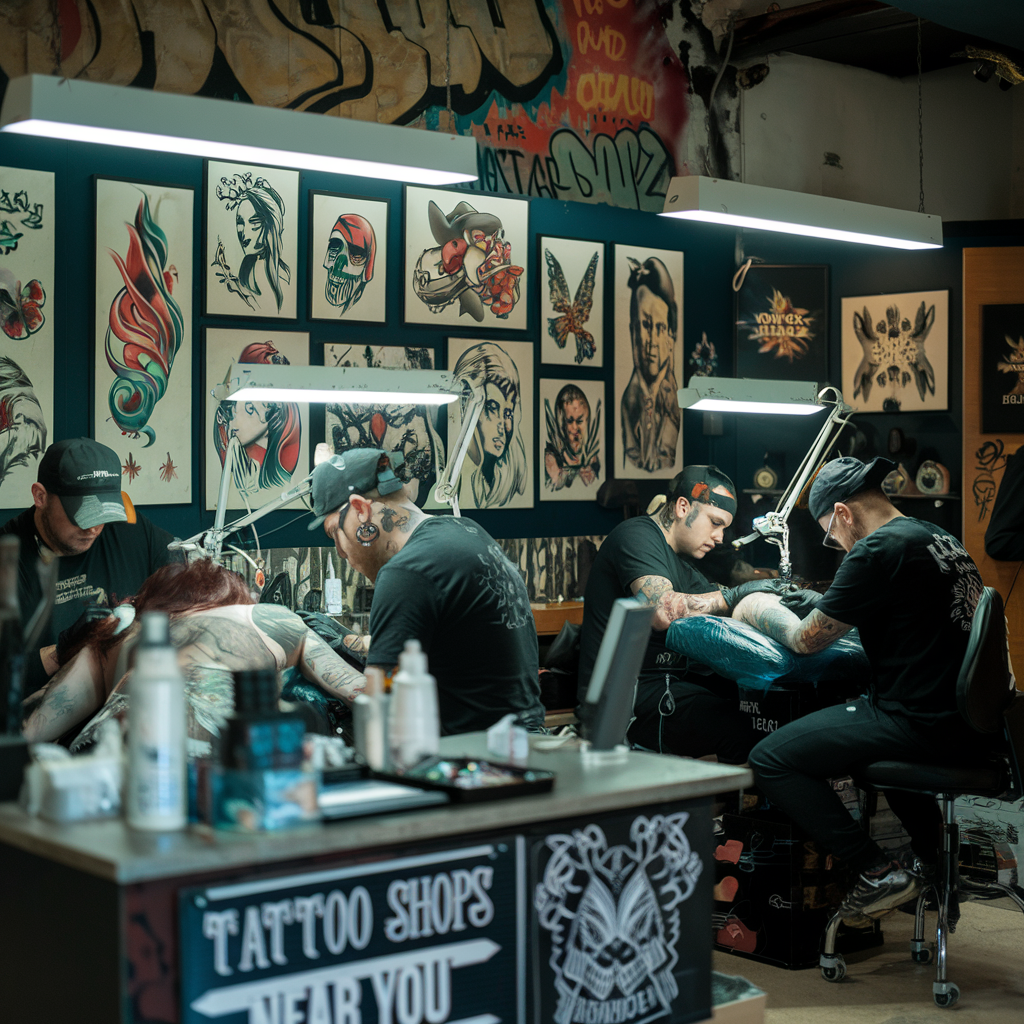Business
Business Casual Men: A Comprehensive Guide

Introduction
The concept of Business Casual Men has transformed the professional dress code landscape, offering men a way to express their individuality while maintaining a polished and professional appearance. Striking the right balance between comfort and professionalism can be challenging, but understanding the principles of business casual attire can help men navigate this often ambiguous dress code. This article provides an in-depth look at business casual for men, including its history, key components, practical tips for building a versatile wardrobe, and how to wear business casual in various settings.
The Evolution of Business Casual Men
Historical Context
Business Casual Men emerged in the late 20th century as a response to the rigid formal dress codes that dominated corporate America. The rise of tech companies and creative industries in the 1990s challenged traditional notions of workplace attire, leading to a more relaxed approach. Businesses began to recognize that a casual yet professional appearance could foster creativity, comfort, and productivity among employees.
Defining Business Casual Men
Business casual is typically characterized by a blend of professional and informal attire. While the specifics can vary by industry and company culture, the general principle is to look polished without the formality of a suit and tie. Business casual allows for greater personal expression while still conveying a sense of professionalism.
Key Components of Business Casual Men Casual Attire
1. Shirts
Dress Shirts
A cornerstone of any business casual wardrobe, dress shirts should be well-fitted and made from quality materials. Opt for classic colors like white, light blue, or subtle patterns. Avoid overly bold prints or casual fabrics like flannel unless the office culture allows for it.
Polo Shirts
Polo shirts can be a great alternative to dress shirts, especially in more relaxed environments. Look for well-constructed polos in solid colors or subtle patterns. Ensure they are not too tight or baggy, as fit is key to maintaining a polished appearance.
2. Pants
Chinos
Chinos are a versatile option for business casual attire. They are more relaxed than dress pants but still maintain a professional look. Choose neutral colors like khaki, navy, or gray, which can easily be paired with a variety of shirts.
Dress Pants
Dress pants are another staple of business casual attire. They offer a more polished look and can be paired with a variety of shirts. Darker colors and subtle patterns typically work best in a business casual environment.
Avoiding Jeans
While some workplaces may allow jeans in a business casual setting, it’s generally safer to opt for chinos or dress pants. If jeans are permitted, choose dark wash, well-fitted jeans without distressing for a more polished look.
3. Footwear
Loafers
Loafers are a classic choice for business casual footwear. They are comfortable, stylish, and can easily transition from formal to casual settings. Opt for leather or suede loafers in neutral colors to complement your outfit.
Oxfords and Derbies
Oxfords and derby shoes offer a slightly dressier option for business casual outfits. Choose leather shoes in classic colors like black or brown. Ensure they are polished and well-maintained, as footwear can significantly impact your overall appearance.
Casual Sneakers
In some business casual environments, clean, minimalist sneakers may be acceptable. Choose simple designs in neutral colors and avoid athletic sneakers or overly casual styles.
4. Outerwear
Blazers
A well-fitted blazer can elevate a business casual outfit. Opt for unstructured blazers in materials like cotton or linen for a relaxed look. Pair with chinos or dress pants for a polished appearance.
Sweaters
Sweaters can add warmth and style to a business casual ensemble. Choose lightweight knits in solid colors or subtle patterns. Avoid overly casual styles like hoodies or oversized fits.
5. Accessories
Belts
A quality leather belt can tie an outfit together. Match your belt to your shoe color for a cohesive look. Avoid overly casual belts with large buckles or flashy designs.
Watches
A classic watch can enhance your business casual attire. Look for timeless designs in metal or leather bands. Avoid overly sporty or flashy watches that may detract from your professional appearance.
Ties
While ties are not typically required in a business casual setting, they can be appropriate for certain occasions. Opt for ties in subtle patterns or solid colors that complement your outfit.
Practical Tips for Building a Business Casual Men Wardrobe
1. Focus on Fit
Fit is crucial in business casual attire. Ensure that your clothes are tailored to your body shape. Ill-fitting clothing can undermine your professional appearance, regardless of the quality of the fabric or design.
2. Invest in Quality
Quality matters when it comes to business casual clothing. Invest in well-made pieces that will stand the test of time. Quality fabrics not only look better but also feel more comfortable and last longer.
3. Stick to a Color Palette
Building a cohesive wardrobe is easier when you stick to a limited color palette. Choose neutral colors for your base pieces and add pops of color with accessories or shirts. This approach allows for easy mixing and matching.
4. Start with the Basics
Begin your business casual wardrobe with essential pieces such as:
- A few well-fitted dress shirts
- A couple of pairs of chinos
- A pair of dress pants
- A versatile blazer
- Quality footwear
Once you have the basics, you can gradually add more variety and personal flair.
5. Consider Your Workplace Culture
Understanding your workplace culture is vital when choosing business casual attire. If your office leans toward the formal side, focus on dressier options. Conversely, if the environment is more relaxed, you can incorporate more casual elements.
Dressing for Various Business Casual Settings
1.Business Casual Men Corporate Offices
In a corporate setting, aim for a polished appearance. Opt for dress shirts paired with chinos or dress pants. A blazer can add a touch of professionalism. Choose leather loafers or oxfords for footwear.
2.Business Casual Men Creative Industries
Creative industries often have more relaxed dress codes. In these environments, you can experiment with colors, patterns, and textures. Polo shirts or well-fitted casual shirts can work well with chinos or dark jeans. Stylish sneakers may also be acceptable.
3. Business Casual Men Client Meetings
When meeting with clients, it’s essential to project professionalism. Choose a dress shirt with a blazer and dress pants. Polished shoes are a must. Ensure your attire aligns with the client’s expectations and the meeting’s formality.
4. Business Casual Men Networking Events
Networking events often call for a smart-casual approach. A blazer over a polo or dress shirt with chinos strikes the right balance. Choose shoes that are comfortable for standing and mingling, such as loafers or smart sneakers.
Common Mistakes to Avoid
1. Overdressing or Underdressing
Striking the right balance in business casual attire is crucial. Overdressing can make you appear out of touch, while underdressing may undermine your professionalism. Always consider the context of the event or workplace.
2. Neglecting Grooming
Grooming plays a significant role in your overall appearance. Ensure you are well-groomed, with neat hair and facial hair (if applicable). Personal hygiene is just as important as your clothing choices.
3. Ignoring the Weather
Dress appropriately for the weather while maintaining a business casual look. In warmer months, consider lighter fabrics and breathable materials, while in colder months, layering with stylish outerwear is essential.
4.Business Casual Men Following Trends Blindly
While it’s great to incorporate current trends, avoid following them blindly. Stick to classic styles that align with your personal brand and workplace culture. Timeless pieces are often more versatile and suitable for various occasions.
Business Casual Men Conclusion
Navigating the world of business casual attire can be challenging, but understanding the key components, building a versatile wardrobe, and dressing appropriately for different settings can help men present themselves confidently and professionally. By focusing on fit, quality, and personal style, men can create a business casual wardrobe that reflects their individuality while adhering to workplace expectations.
As the business landscape continues to evolve, so too does the concept of business casual. Embracing this flexibility allows men to express themselves while maintaining a polished appearance. By mastering the art of business casual, men can enhance their professional image and make a lasting impression in any workplace environment.
Business
Discovering the Best Thai Restaurants Near Me: A Culinary Journey

Introduction
Thai Restaurants Near Me cuisine is renowned for its vibrant flavors, aromatic spices, and unique combinations of ingredients. From fragrant curries to fresh salads and savory noodles, Thai food offers a delightful culinary experience that appeals to a wide range of palates. If you’re searching for the best Thai restaurants near you, this comprehensive guide will help you explore your options, understand the cuisine, and make the most of your dining experience.
The Allure of Thai Restaurants Near Me Cuisine
Thai Restaurants Near Me food is characterized by its balance of five fundamental flavors: sweet, salty, sour, bitter, and spicy. This harmonious blend creates dishes that are not only delicious but also incredibly satisfying. Some of the hallmark ingredients used in Thai cooking include:
- Herbs and Spices: Fresh herbs like basil, cilantro, and mint, along with spices such as lemongrass, galangal, and kaffir lime leaves, are essential for authentic flavor.
- Chilies: Thai cuisine often features various types of chilies, adding heat and depth to dishes.
- Coconut Milk: Used in many curries and desserts, coconut milk adds richness and creaminess.
- Fish Sauce: A staple in Thai cooking, fish sauce provides umami and saltiness to many dishes.
- Rice and Noodles: Rice is a key component of Thai meals, while noodles are used in popular dishes like Pad Thai and Pad See Ew.
How to Find Thai Restaurants Near Me
1. Online Search of Thai Restaurants Near Me
The easiest way to find Thai restaurants in your area is through online search engines. Simply type “Thai restaurants near me” into Google or any other search engine. You’ll receive a list of nearby options, complete with reviews, ratings, and contact information.
2. Review Platforms of Thai Restaurants Near Me
Websites like Yelp and TripAdvisor provide valuable insights into local dining options. You can read reviews from other customers, view menus, and check ratings to find the best Thai restaurants in your vicinity.
3. Social Media and Food Apps of Thai Restaurants Near Me
Platforms like Instagram and Facebook are great for discovering new restaurants. Many Thai restaurants showcase their dishes on social media, allowing you to see the food before you go. Food apps like Zomato and OpenTable also provide user-generated content and reviews.
4. Local Recommendations of Thai Restaurants Near Me
Don’t hesitate to ask friends, family, or coworkers for recommendations. Personal experiences can lead you to hidden gems that might not appear in online searches.
5. Explore Neighborhoods
If you’re in a culturally diverse area, consider exploring neighborhoods known for their Thai cuisine. Areas with a high concentration of Thai restaurants often have a variety of options to choose from.
What to Look for in a Thai Restaurants Near Me
When searching for the perfect Thai restaurant, consider the following factors:
1. Authenticity of Thai Restaurants Near Me
Look for restaurants that emphasize authentic Thai cooking. This often means a menu that features traditional dishes made with fresh ingredients. Authentic Thai restaurants may also have Thai-speaking staff and decor that reflects Thai culture.
2. Variety of Menu Options of Thai Restaurants Near Me
A great Thai restaurant should offer a diverse menu that includes appetizers, soups, salads, main dishes, and desserts. This variety allows you to explore different flavors and textures.
3. Dietary Accommodations
If you have dietary restrictions, check if the restaurant can accommodate your needs. Many Thai restaurants offer vegetarian, vegan, and gluten-free options.
4. Ambiance
The atmosphere of a restaurant can enhance your dining experience. Look for a place with a welcoming ambiance, comfortable seating, and decor that reflects Thai culture.
5. Customer Service
Excellent customer service plays a crucial role in your dining experience. Pay attention to staff friendliness, attentiveness, and knowledge about the menu.
Must-Try Dishes at Thai Restaurants
When dining at a Thai restaurant, consider trying these popular dishes:
1. Pad Thai
Pad Thai is one of the most famous Thai dishes. This stir-fried noodle dish typically features rice noodles, shrimp or chicken, tofu, bean sprouts, peanuts, and lime, all tossed in a flavorful sauce. It’s a must-try for first-time visitors.
2. Tom Yum Soup
Tom Yum is a hot and sour soup that is bursting with flavor. Made with shrimp, lemongrass, kaffir lime leaves, and chilies, this soup is both aromatic and refreshing. It’s perfect as an appetizer or a light meal.
3. Green Curry
Green curry is a spicy and aromatic dish made with green curry paste, coconut milk, vegetables, and your choice of protein (chicken, beef, or tofu). Served with jasmine rice, it’s a delightful combination of flavors.
4. Som Tum (Green Papaya Salad)
This refreshing salad features shredded green papaya, tomatoes, peanuts, and a tangy dressing made from lime juice and fish sauce. Som Tum is a perfect balance of sweet, sour, and spicy flavors.
5. Massaman Curry
Massaman curry is a rich and mildly spicy curry that combines Thai and Indian flavors. It typically includes beef or chicken, potatoes, and peanuts, simmered in a creamy coconut milk sauce.
6. Mango Sticky Rice
For dessert, don’t miss out on mango sticky rice. This traditional Thai dessert consists of sweet sticky rice topped with ripe mango slices and drizzled with coconut cream. It’s a perfect way to end your meal.
Tips for a Great Thai Dining Experience
1. Share Dishes
Thai cuisine is often best enjoyed shared. Order several dishes to share among your dining companions. This way, you can sample a variety of flavors and textures.
2. Adjust Spice Levels
If you’re sensitive to spice, don’t hesitate to ask for a milder version of a dish. Many Thai restaurants are happy to accommodate your spice preferences.
3. Pair with Thai Beverages
Consider pairing your meal with traditional Thai beverages, such as Thai iced tea or a refreshing coconut water. These drinks complement the flavors of Thai cuisine perfectly.
4. Don’t Rush Your Meal
Enjoy the experience of dining at a Thai restaurant. Take your time to savor each dish and appreciate the flavors. Thai dining is often a leisurely affair, so relax and enjoy.
5. Explore Beyond the Basics
While classic dishes like Pad Thai and Tom Yum are delicious, don’t hesitate to try lesser-known dishes on the menu. Ask your server for recommendations to discover hidden gems.
The Future of Thai Restaurants Near Me
As the demand for diverse cuisines grows, Thai restaurants are likely to continue expanding and evolving. Here are some trends to watch:
1. Fusion Cuisine of Thai Restaurants Near Me
Many chefs are experimenting with fusion cuisine, incorporating Thai flavors into other culinary traditions. This trend can lead to exciting new dishes that blend cultures and flavors.
2. Sustainable Sourcing
As consumers become more environmentally conscious, many Thai restaurants are focusing on sustainable sourcing of ingredients. This includes using organic produce, humanely raised proteins, and eco-friendly packaging.
3. Health-Conscious Options
With an increasing focus on health and wellness, more Thai restaurants are offering lighter, healthier options. Expect to see more dishes that focus on fresh vegetables, lean proteins, and less oil.
4. Online Ordering and Delivery of Thai Restaurants Near Me
The rise of food delivery services has made it easier than ever to enjoy Thai cuisine at home. Many restaurants are adapting their menus for takeout and delivery, allowing customers to enjoy their favorite dishes without dining in.
Conclusion
Finding the best Thai restaurants near you can lead to a delightful culinary adventure. With a rich variety of flavors, textures, and dishes to explore, Thai cuisine offers something for everyone. By considering authenticity, menu variety, and customer service, you can ensure a fantastic dining experience.
Whether you’re a longtime fan of Thai food or trying it for the first time, there’s no shortage of delicious options. From beloved classics like Pad Thai and Tom Yum to lesser-known gems, each dish tells a story of Thailand’s rich culinary heritage. So, embark on your journey to discover local Thai restaurants, savor the incredible flavors, and enjoy the vibrant culture that comes with every meal. Happy dining!
Business
Finding the Best Tattoo Shops Near You: A Comprehensive Guide

Introduction
Tattoo Shops Near You have become a popular form of self-expression, art, and identity. Whether it’s a small design or a full sleeve, the decision to get a tattoo is significant. With an increasing number of tattoo shops available, finding the right one near you can be daunting. This guide explores how to find reputable tattoo shops, what to consider before choosing one, and tips for ensuring a positive tattoo experience.
The Growing Popularity of Tattoo Shops Near You
Tattoo Shops Near You have transitioned from being associated with counterculture to becoming a mainstream form of art. Celebrities, influencers, and everyday people proudly display their ink, leading to a surge in demand for skilled tattoo artists. As a result, many tattoo shops have opened, each offering unique styles and specialties.
Why Choosing the Right Tattoo Shops Near You Matters
Selecting the right tattoo shop is crucial for several reasons:
- Quality of Work: A reputable shop will have skilled artists who can create high-quality tattoos that meet your expectations.
- Hygiene and Safety: Ensuring that the shop follows strict hygiene practices is vital for your health and safety.
- Artistic Style: Different shops may specialize in various styles, such as traditional, realism, tribal, or watercolor. Finding a shop that matches your desired style is essential.
How to Find Tattoo Shops Near You
1. Online Research on Tattoo Shops Near You
The internet is a powerful tool for finding local tattoo shops. Here’s how to utilize it effectively:
- Search Engines: Use search engines like Google to look for “tattoo shops near me.” This will provide a list of nearby options along with their ratings, reviews, and contact information.
- Social Media: Platforms like Instagram and Facebook are excellent for discovering tattoo artists and shops. Many tattoo artists showcase their portfolios on these platforms, allowing you to see their work and style before visiting.
- Review Websites: Websites like Yelp and TripAdvisor can provide insights into customer experiences. Look for shops with high ratings and positive feedback.
2. Ask for Recommendations on Tattoo Shops Near You
Personal recommendations can be invaluable. Ask friends, family, or acquaintances who have tattoos about their experiences. Inquire about the shops they visited, the artists they worked with, and the overall quality of their tattoos.
3. Visit Local Tattoo Shops Near You Conventions
Tattoo conventions are fantastic opportunities to meet artists, see their work, and learn about local shops. Attending a convention allows you to interact with multiple artists and find one whose style resonates with you.
4. Check Local Listings of Tattoo Shops Near You
Local directories, such as Google Maps, can help you find tattoo shops in your area. These listings often include photos, addresses, and reviews, making it easy to compare options.
What to Consider Before Choosing a Tattoo Shops Near You
1. Artist Portfolios of Tattoo Shops Near You
Before deciding on a shop, reviewing the portfolios of the artists is crucial. Look for:
- Diversity of Styles: Ensure the artist can create the style you want, whether it’s geometric, illustrative, or traditional.
- Consistency: Check for a consistent quality in their work. Look for healed tattoos in their portfolios to see how their work ages over time.
- Attention to Detail: A good artist will pay attention to detail. Look for clean lines, shading techniques, and overall artistry.
2. Hygiene and Safety Practices of Tattoo Shops Near You
Safety is paramount when getting a tattoo. Consider the following:
- Clean Environment: Visit the shop to assess cleanliness. The workspace should be tidy, and the equipment should be sanitized.
- Sterilization Procedures: Ensure that the shop follows proper sterilization procedures for needles and equipment. Ask about their protocols and whether they use single-use supplies.
- Licensing and Certifications: Verify that the shop and its artists have the necessary licenses and certifications required by local health departments.
3. Consultations of Tattoo Shops Near You
Many reputable tattoo shops offer consultations before the actual tattooing process. Use this opportunity to:
- Discuss Your Design: Share your ideas and sketches with the artist. A good artist will listen to your vision and provide feedback.
- Ask Questions: Inquire about the tattooing process, pain levels, aftercare, and any concerns you may have.
- Gauge Comfort Level: Pay attention to how comfortable you feel with the artist. Trust and communication are essential for a positive experience.
4. Pricing and Payment Options
Tattoo prices can vary significantly based on various factors, including:
- Size and Complexity: Larger and more intricate designs typically cost more.
- Artist Experience: Established artists with a strong portfolio may charge higher rates.
- Location: Tattoo shops in urban areas may have higher prices due to increased overhead costs.
Discuss pricing upfront to avoid surprises. Inquire about payment methods, deposits, and any additional fees.
Preparing for Your Tattoo Shops Near You Appointment
1. Get Enough Rest
Ensure you are well-rested before your appointment. A good night’s sleep will help you manage pain and stay relaxed during the process.
2. Stay Hydrated and Nourished
Drink plenty of water and eat a healthy meal before your appointment. Staying hydrated and nourished can help with pain management and overall comfort.
3. Avoid Alcohol and Blood Thinners
Refrain from consuming alcohol or taking blood-thinning medications (such as aspirin) for at least 24 hours before your appointment. These substances can increase bleeding and impact healing.
4. Wear Comfortable Clothing
Dress in comfortable clothing that allows easy access to the area where you’ll be getting tattooed. This will help you feel at ease during the session.
Aftercare Tips for Your New Tattoo
Proper aftercare is essential for healing and preserving the quality of your tattoo. Here are some tips:
1. Follow Your Artist’s Instructions
Your tattoo artist will provide specific aftercare instructions. Follow these closely to ensure optimal healing.
2. Keep It Clean
Gently wash the tattooed area with mild soap and water. Pat it dry with a clean towel, avoiding friction.
3. Moisturize
Apply a thin layer of fragrance-free lotion or a specialized tattoo aftercare product to keep the skin moisturized.
4. Avoid Sun Exposure
Protect your tattoo from sun exposure during the healing process. Once healed, use sunscreen to prevent fading.
5. Don’t Pick or Scratch
Avoid picking at scabs or scratching the tattooed area. This can lead to infection and affect the final appearance of your tattoo.
Common Misconceptions About Tattoos
1. Tattoos Are Permanent
While tattoos are designed to be permanent, they can fade over time. Factors such as sun exposure, skin type, and aftercare can affect a tattoo’s longevity. If you ever wish to remove a tattoo, options like laser removal exist, but they can be costly and time-consuming.
2. Tattoos Hurt the Same for Everyone
Pain levels during tattooing vary from person to person. Factors such as individual pain tolerance, the tattoo location, and the size of the tattoo can all influence the experience.
3. All Tattoo Shops Are the Same
Not all tattoo shops are created equal. Researching and finding a reputable shop with skilled artists is crucial for a positive experience.
Conclusion
Finding the right tattoo shop near you is an essential step in your tattoo journey. With an increasing number of options available, it’s crucial to do your research, consider your preferences, and prioritize hygiene and artist expertise. By following the tips outlined in this guide, you can ensure a positive and fulfilling tattoo experience.
As you embark on this journey of self-expression, remember that tattoos are personal stories etched in ink. Choose a design that resonates with you, and enjoy the process of bringing your vision to life with the help of a skilled tattoo artist. Happy tattooing!
Business
Exploring the World of Coffee Brands: A Comprehensive Guide

Introduction
Coffee Brands is more than just a morning beverage; it’s a global phenomenon that brings people together and fuels our daily routines. With countless coffee brands available today, each offering unique flavors, blends, and brewing methods, choosing the right one can be overwhelming. This article delves into popular coffee brands, their distinctive characteristics, brewing tips, and how to select the perfect coffee for your taste preferences.
The Rise of Coffee Brands Culture
In recent years, coffee culture has flourished, with more people seeking high-quality, artisanal options. This rise can be attributed to several factors, including an increase in specialty Coffee Brands shops, a growing interest in sustainable sourcing, and a desire for unique flavor profiles. As consumers become more educated about coffee, they are also more discerning in their choices, leading to the emergence of numerous coffee brands that cater to these preferences.
Popular Coffee Brands to Know
1. Starbucks Coffee Brands
Overview: Founded in 1971 in Seattle, Starbucks has become synonymous with coffee culture. Known for its variety of espresso drinks, specialty beverages, and seasonal offerings, Starbucks has expanded globally, boasting thousands of locations.
Signature Offerings: The iconic Pumpkin Spice Latte and the caramel macchiato are crowd favorites. Starbucks also emphasizes sustainability, sourcing ethically produced coffee through its Coffee and Farmer Equity (C.A.F.E.) Practices.
2. Dunkin’ Donuts
Overview: Originally known for its donuts, Dunkin’ Donuts has carved out a significant niche in the coffee market. The brand is particularly popular in the United States, offering a range of brewed coffee, espresso drinks, and cold brews.
Signature Offerings: Dunkin’s Original Blend coffee is a classic choice, while their iced coffee has a loyal following. The brand is known for its affordability and convenience, making it a go-to option for many coffee lovers.
3. Peet’s Coffee Brands
Overview: Founded in 1966 in Berkeley, California, Peet’s Coffee is known for its dark roast coffee and commitment to sourcing high-quality beans. The brand emphasizes small-batch roasting, ensuring each cup delivers robust flavors.
Signature Offerings: The Major Dickason’s Blend is a popular choice, celebrated for its rich, full-bodied flavor. Peet’s also offers a variety of single-origin coffees and specialty drinks.
4. Blue Bottle Coffee Brands
Overview: Blue Bottle Coffee is a specialty coffee roaster that originated in Oakland, California. Known for its meticulous sourcing and brewing techniques, Blue Bottle has gained a devoted following among coffee aficionados.
Signature Offerings: The brand is famous for its single-origin coffees and precision brewing methods. Their New Orleans-style iced coffee, made with chicory, is a seasonal favorite.
5. Lavazza Coffee Brands
Overview: Originating from Italy, Lavazza has been a staple in the coffee industry since 1895. Known for its rich, traditional Italian coffee blends, Lavazza offers a range of products suitable for espresso lovers and casual drinkers alike.
Signature Offerings: The Lavazza Qualità Rossa is a popular choice, known for its smooth and balanced flavor. The brand also offers a variety of espresso pods for convenient brewing.
6. Stumptown Coffee Brands Roasters
Overview: Stumptown Coffee Roasters, founded in Portland, Oregon, is known for its direct trade sourcing and commitment to quality. The brand emphasizes the relationship between farmers and consumers, ensuring fair practices and high-quality beans.
Signature Offerings: The Hair Bender blend is a standout, offering a complex flavor profile with notes of chocolate and cherry. Stumptown also pioneered cold brew coffee, which has become increasingly popular.
7. Illy Coffee Brands
Overview: Illy is an Italian coffee brand known for its premium espresso. Founded in 1933, the company focuses on quality and sustainability, sourcing beans from the best coffee-growing regions around the world.
Signature Offerings: Illy’s Classico Espresso is a favorite among espresso enthusiasts, known for its smooth, rich flavor and creamy texture. The brand also offers a variety of coffee products, including ground coffee and pods.
8. Tim Hortons Coffee Brands
Overview: A Canadian institution, Tim Hortons is known for its coffee and donuts. The brand has expanded internationally, offering a variety of coffee options and quick-service meals.
Signature Offerings: The Original Blend coffee remains a staple, praised for its smooth and approachable flavor. Tim Hortons also offers specialty drinks like the French Vanilla and Iced Cappuccino.
How to Choose the Right Coffee Brands
Selecting the perfect coffee brand can be a personal journey, influenced by your taste preferences, brewing methods, and lifestyle. Here are some tips to help you make an informed choice:
1. Consider Your Flavor Preferences
Coffee comes in a variety of flavor profiles, from fruity and acidic to rich and chocolatey. Think about the flavors you enjoy and seek out brands that emphasize those characteristics. For example, if you prefer fruity notes, consider brands like Blue Bottle or Stumptown.
2. Explore Different Roast Levels
Coffee can be roasted to varying degrees, impacting its flavor and aroma. Light roasts tend to be more acidic and fruity, while dark roasts are often bold and smoky. Experimenting with different roast levels can help you discover your ideal coffee.
3. Evaluate Brewing Methods
Different coffee brands cater to various brewing methods. If you prefer espresso, brands like Lavazza and Illy are excellent choices. For drip coffee lovers, Dunkin’ and Peet’s offer a range of blends suitable for traditional brewing.
4. Look for Ethical Sourcing
Many consumers today prioritize sustainability and ethical sourcing in their coffee choices. Look for brands that emphasize direct trade or fair trade practices, ensuring that farmers are compensated fairly for their work.
5. Read Reviews and Recommendations
Online reviews and recommendations from friends can provide valuable insights into different coffee brands. Consider trying a few brands based on recommendations to see which resonates with your taste buds.
Coffee Brands Brewing Tips for the Perfect Cup
Once you’ve selected your coffee brand, proper brewing techniques can enhance your coffee-drinking experience. Here are some tips to help you brew the perfect cup:
1. Use Fresh Coffee Brands Beans
Coffee is best enjoyed fresh. Purchase whole beans and grind them just before brewing to preserve flavor and aroma. Store beans in an airtight container away from light and moisture.
2. Measure Your Coffee Brands
Using the right coffee-to-water ratio is crucial for a balanced cup. A general guideline is to use one to two tablespoons of coffee per six ounces of water. Adjust to your taste preferences.
3. Pay Attention to Water Temperature
The ideal water temperature for brewing coffee is between 195°F and 205°F (90°C to 96°C). Water that is too hot can lead to over-extraction, resulting in a bitter taste.
4. Experiment with Brewing Methods
Different brewing methods can produce distinct flavor profiles. Experiment with methods like pour-over, French press, AeroPress, or espresso to find what you enjoy most.
5. Clean Your Equipment
Regularly cleaning your coffee maker, grinder, and other equipment ensures that old coffee oils and residue don’t affect the flavor of your brew. Follow the manufacturer’s instructions for proper cleaning.
The Future of Coffee Brands
As coffee culture continues to evolve, several trends are shaping the future of coffee brands:
1. Sustainability Initiatives
More coffee brands are prioritizing sustainability, focusing on environmentally friendly practices, reducing waste, and supporting farmers. Brands that emphasize transparency and ethical sourcing will likely gain popularity.
2. Specialty Coffee Brands Growth
The demand for specialty coffee is on the rise. Consumers are increasingly interested in unique flavor profiles and artisanal brewing methods. Brands that offer single-origin coffees and limited-edition blends will thrive in this competitive market.
3. Technological Advancements
Advancements in technology are transforming the coffee industry. From smart coffee makers to subscription services that deliver fresh beans to your doorstep, innovation will continue to shape the way we enjoy coffee.
4. Health and Wellness Trends
As consumers prioritize health and wellness, coffee brands may explore functional ingredients, such as adaptogens or superfoods, that promote health benefits. This trend will likely lead to the development of new coffee products that cater to health-conscious consumers.
Conclusion
The world of coffee brands is vast and diverse, offering something for every palate. By exploring different brands and understanding your preferences, you can discover the perfect coffee to suit your taste. Whether you prefer the convenience of a local chain or the artisanal quality of a specialty roaster, there’s a coffee brand out there for you.
As you embark on your coffee journey, remember to experiment with brewing methods, explore flavor profiles, and prioritize sustainability. With the right coffee brand and brewing techniques, you can elevate your coffee experience and savor every sip. Happy brewing!
-

 Business7 days ago
Business7 days agoThe Importance of Business Card Holders: A Comprehensive Guide
-

 Sports6 days ago
Sports6 days agoThe Iconic Sport Peppers: A Culinary Delight in Chicago’s Food Scene
-

 Beauty Contest Games7 days ago
Beauty Contest Games7 days agoThe Allure of Rare Beauty: Celebrating Uniqueness in a World of Conformity
-

 Business6 days ago
Business6 days agoUnderstanding Apple Business Manager: A Comprehensive Guide
-

 Business6 days ago
Business6 days agoUnderstanding the Business for Sale Market: A Comprehensive Guide
-

 Tech6 days ago
Tech6 days agoTech eTruesports: Revolutionizing the Digital Sports Landscape
-

 Beauty Contest Games6 days ago
Beauty Contest Games6 days agoUnveiling the True Beauty Glow: A Comprehensive Guide
-

 Business6 days ago
Business6 days agoThe Impact of MOO Business Cards: Elevating Professional Branding






